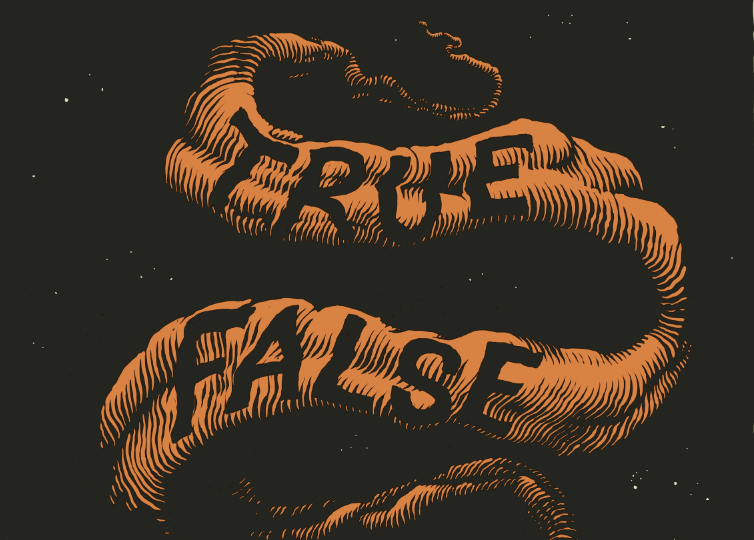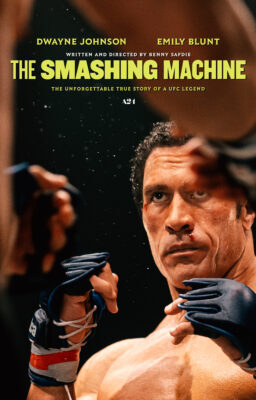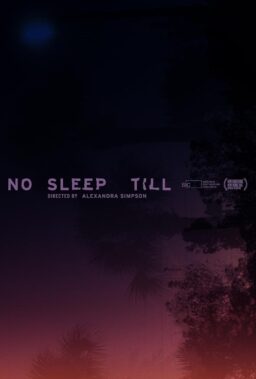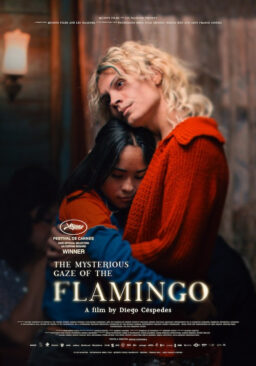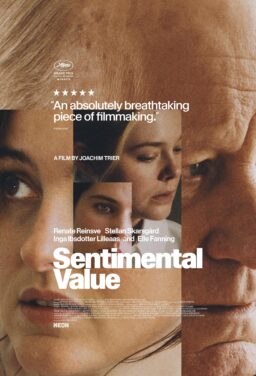“The last film festival.” This was how my friends and I casually joked about last year’s True/False, which took place in early March, right around the time when the COVID-19 pandemic was ramping up to become the global nightmare of a generation. On the second day of the festival, Austin mayor Steve Adler announced the cancellation of SXSW and also declared a state of emergency, which effectively sent a foreboding chill throughout the grounds of Columbia, Missouri. By the end of the weekend, every interaction was charged with danger and softened with jokes. The omnipresence of soap bordered on absurd. Hugs were preceded with a quasi-sarcastic, “Should we?” I honestly assumed the whole thing was overblown at the time. “This is going to alter American life for the foreseeable future,” a buddy plainly told me. I rolled my eyes in response. In retrospect, seeing that many movies unmasked, even in sparsely attended theaters, feels like a taunt.
It’s unclear when I will physically attend another film festival. (Hopefully soon.) I haven’t participated in other “virtual” festivals like many of my colleagues, but I made an exception for True/False, partially because of my appreciation for the festival and also because I have a fondness for tidy poetry. It’s only appropriate that I should “attend” the Teleported version of the festival after attending its “final” on-the-ground incarnation. (The quotation marks imply the gentlest sarcasm.) As far as the virtual element of the experience goes, the technology worked smoothly without any hiccups and the interface was fairly easy to maneuver, which is basically all I care about. The rest of the experience involves the six feature films screened on the platform. For that, you can read on.

Emilia Mello’s “No Kings” and Germán Arango’s “Songs that Flood the River” follow communities on the margins of traditional society dealing with threats from the state and lingering trauma, respectively. In “No Kings,” director Emilia Mello immerses herself in one of Brazil’s last remaining Caiçara communities, who reside in the Atlantic Forest and live by the tenets of sustainable agriculture. Mello watches as the adults embark on major fishing expeditions while the children try to catch what they can in tide pools. We see them work at a steady, leisurely pace for what they need to survive, cracking wise and enjoying each other’s company during the constant downtime. Though they’re certainly isolated, they don’t lack self-awareness about their way of life. “You can have the rich life. I prefer the cheap one,” jokes Ismail, who writes poetry by candlelight in his spare time.
Mello emphasizes the sensuous elements of the environment—the choppy waves of the ocean, the mounds of fish as they hit the deck of the trawler, and the nimble nature of crabs as they scurry on the rocks. She builds a close relationship with the assertive Lucimara, a young girl adept at catching fish on her own time who peppers Mello with questions about her childhood. (It turns out that they grew up in similar communal living circumstances.) There’s an easygoing nature to “No Kings” that’s reframed in the film’s final moments when title cards explicate the various threats the Caiçara face, such as deforestation, real estate speculation, and violent intervention from a hostile political regime, all of which threaten to push them into the cities. Mello doesn’t overlay any impending sense of catastrophe over her footage. Instead, she implicitly conveys what will be lost if the Brazilian government has its way.
In “Songs That Flood the River,” Arango goes deep into the Colombia jungle to the village of Pogue, where the Bojayá people sing “alabados,” traditional funeral melodies intended to ensure the dead receive safe passage to the realm of the souls. The film’s protagonist, Oneida, learned to sing these songs as a child, around the same time a snake bit her left leg forcing its amputation. It’s rendered Oneida stranded in the jungle, unlike other Afro-Colombian families from her village who, according to Arango, move around constantly. This relative immobility gave her a strong connection to the alabados, but it was only strengthened after Oneida survived the 2002 Bojayá massacre. During a firefight between guerilla warriors and paramilitaries, a bomb was launched and went through the roof of a church, killing upwards of 119 people. This tragedy effectively decimated the small community, and left the survivors, most of whom lost family or friends, with permanent lingering trauma.
Arango introduces the events of the massacre midway through “Songs That Flood the River,” preferring to submerge the audience in the Bojayá community before reframing their practices in a historical light. Still, even before he provides that additional context, Arango filters an unseen haunted presence into the frame. Subjects stare deeply into the camera with a vacant expression, as if something has been taken from them. He returns to a motif of a young girl walking across the river, which seemingly holds a mystical presence to Oneida and the rest of the community. This formal eeriness ultimately enriches the community’s cultural vibrancy, illustrating how the alabado emanates from a place of strength. People like Oneida channel their considerable pain into a rich artistic tradition that serves to process those emotions and honor those who have passed.

While “This Rain Will Never Stop” doesn’t feature explicit scenes of warfare, director Alina Gorlova imbues it into the film, ensuring it’s always on screen if not technically in the frame. War defines the experiences of Andriy Suleiman, a Red Cross volunteer whose family fled Syria for his mother’s home of Ukraine, two countries in the midst of their own long-term conflicts. Separated into nine chapters, Gorlova follows him on his many laborious, emotionally taxing journeys: supply missions in the Ukraine, a trip to Germany for his brother’s wedding, an emotion reunion with his uncle in Iraq, and ultimately a return to the Syrian border to return his father’s body to the homeland. Gorlova breaks up these scenes with suggestive imagery—aerial photography of mountains; slice-of-life moments involving Ukrainian citizens; eerie, propagandistic crowd shots of soldiers marching in unison—that stimulate a tense alienation as if they represent a perpetually uneasy calm before an ever-threatening storm.
Vyacheslav Tsvetkov’s stark black-and-white photography, occasionally disrupted by visual distortions and glitches, most successfully evokes this destabilizing feeling of life during wartime. Suleiman, meanwhile, captivates as a non-traditional protagonist—an externally stoic man conflicted about his future, whether he should stay in the Ukraine and continue to help his fellow innocent countrymen trapped in the conflict or emigrate West to continue his education. Gorlova connects Suleiman with the non-narrative imagery to create a macro portrait of war’s cyclicality and the difficulty of moving through such uncertainty. She forgoes any explicit political critique in favor of a study in maintaining stability within normalized chaos. Environment and psychology are affected in equal measure while life persists unabated.

In “Delphine’s Prayers,” Cameroonian director Rosine Mbakam, this year’s True Vision Award recipient, takes a more singular approach to personal struggle by filming her friend Delphine, another Cameroonian transplant living in Belgium, as she recounts her life. Delphine details her traumatic childhood in stunning emotional clarity, communicating her mixed and hardened emotions every step of the way. She walks the audience and Mbakam through her experience with sexual exploitation, financial insecurity, and her eventual emigration to Europe, where she continues to take care of her child while trapped in a loveless marriage. Mbakam provides Delphine space to monologue by filming her in long, static takes, allowing her to determine the flow of conversation as well as when it’s time to pause. “Delphine’s Prayers” communicates the intimacy between director and subject primarily through Mbakam’s gentle questions and Delphine’s comfort on camera. By the end, however, Mbakam makes their connection more explicit. Though they likely would have never met in Cameroon, they became friends in Belgium because they are both outsiders in their adopted country.
Mbakam employs that intersectional context as a foundation. The focus remains on Delphine, a self-possessed, engaging woman who can command attention through her confident tone and powerful verbiage, communicated in a mixture of French and Cameroonian Pidgin English. She’s hyper-conscious of the various facets of acting: she carefully does her own hair and makeup and tailors her speech to fit each part of her story, appropriate gestures for what’s essentially a one-woman show. When Delphine delivers her prayer in the stirring climax, she exists in a potent space where authenticity and performance converge toward a constructed reality. It’s the act of two collaborators crafting both a narrative and an emotional sphere for it to flourish.

The last two films in the Teleported lineup are process-focused institutional portraits that follow their respective uphill battles to achieve their respective aims. The first, “From the Wild Sea,” tracks volunteers at a European marine animal rescue as they attempt to save vulnerable coastal wildlife, primarily seals and swans, from life-threatening elements. Director Robin Petré almost exclusively employs static shots to film the animals in distress and the humans trying to save them, allowing the actions of both parties to play out in real time. The first scene features a caged seal, filmed at ground level, being released back into the ocean on the shore of a beach. Later, we watch as a veterinarian struggles to address another seal’s infected limbs and jaw as it jerks around in discomfort. The flip side to these humanitarian efforts is obvious: many animals are either too sick or affected by the wild to be saved and forcing them back into their natural habitat would ultimately be more damaging than letting them die. Petré traces many of these heartbreaking incidents, including the autopsies, in which a surgeon tries to determine the reasons for their death.
Petré avoids any outright editorializing, preferring for her more sensorial, observational approach to communicate her activism. Climate change and man-made hazards are most responsible for the treacherous conditions that disproportionately harm wildlife, which sometimes comes through in occasional pointed comments from the volunteers but mostly the scenes of violent storms that precipitate immediate rescues or the sustained shots of animals in various stages of anguish. There’s an unadorned poetry to watching seals for sustained periods of time, especially when their large eyes gaze up at the camera. Their blank expressions are perfect for projection, but Petré doesn’t infuse them with any outsized wonder or mystery. They are simply defenseless against the weather, whose danger has been magnified by our negligence or malfeasance, and in need of vigilant care. “From the Wild Sea” doesn’t strain for hope or wallow in the misery of the situation. It merely presents the world as it is, with victories and defeats occurring in tandem.

Meanwhile, “The Grocer’s Son, the Mayor, the Village and the World” follows the efforts of a more niche undertaking: French documentary organization Ardèche Images’ ambitious plan to establish Tënk, a streaming service specializing in arthouse documentaries. Based in the village of Lussas, home of the non-fiction film festival Les Etats Généraux du Film documentaire, Ardèche founder Jean-Marie Barbe uses his family’s old grocery store as a base of operations, putting his team to work to gather investors, as well as advertise the service and shore up the technology. The formation of Tënk also coincides with the construction of a new building that will house facilities for all aspects of documentary production, a project that intrigues and puzzles the citizens of Lussas. The film also follows the village’s local farming community, Lussas’ other primary source of revenue, and their daily operations in the fields as they struggle to maintain production. Despite their radically different professions, director Claire Simon positions the farmers and the documentarians as mirrors of each other. They’re both trying to keep up with technological advances and changing tastes while staying true to their respective operations.
Simon consolidated “The Grocer’s Son…” from her eight-hour documentary series “Le Village,” which ostensibly takes a more macro approach to life in Lussas, showcasing the full swath of the village’s economic split between agriculture and filmmaking. Though obviously condensed from a larger project, “The Grocer’s Son…” maintains a comprehensive view and a discursive rhythm. She draws strong connections between the tactility of farming and the on-the-ground hustle of gathering support for a specialized venture. Similarly, Simon explores the village’s regional anxiety, contrasting the hyper-localized work in the vineyards with the film festival that relies on the support and employment of outsiders. Mainly, however, “The Grocer’s Son…” concerns financial insecurity and how it causes immediate practical headaches and larger existential quandaries. A farmer worrying about the tradeoff between using machines to increase yield and employing people who will be more careful with the crops lies in the same ballpark as Jean-Marie Barbe calling an investor to get an extra $60,000 euros for Tënk while also trying to convince them that the service will eventually be self-sustaining.
“The Grocer’s Son…” comes alive when Simon focuses on the arguments and discussions between Barbe and his team. Much like in Frederick Wiseman’s work, Simon documents meetings and the ways in which temperatures organically rise whenever people disagree on appropriate methods of achieving a shared goal. Simon treats the filmmakers and festival organizers as if they’re tradespeople, striving to practice their craft just like everyone else. She divests their struggle of phony romanticism and concentrates on the nitty-gritty aspects of maintaining a documentary festival and pushing it into a virtual space. The correlation between Ardèche Images and True/False, as well as Lussas and the small college town of Columbia, Missouri, is no less powerful just because it’s obvious. After all, these are global concerns.

